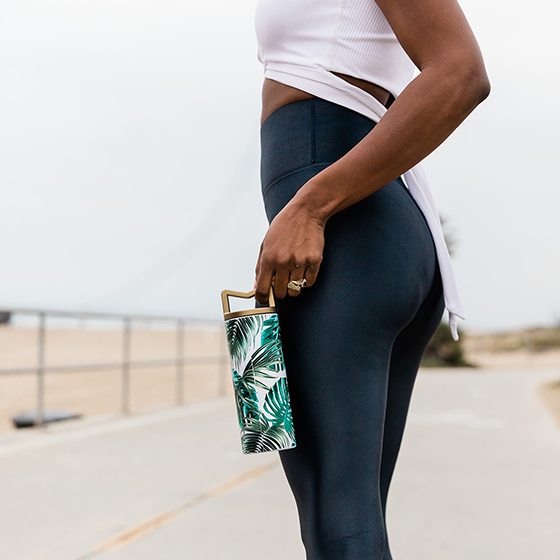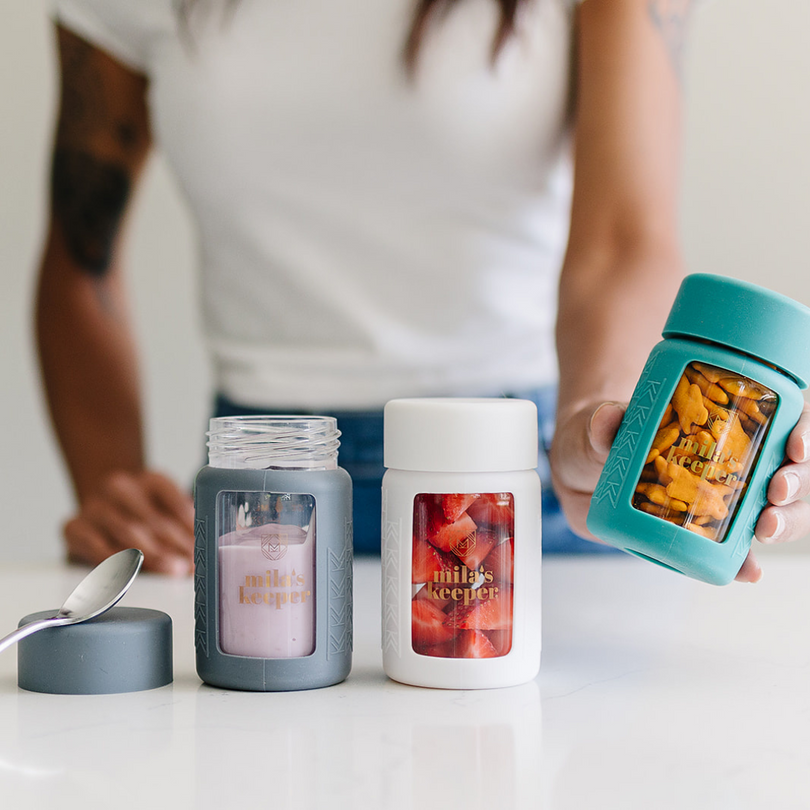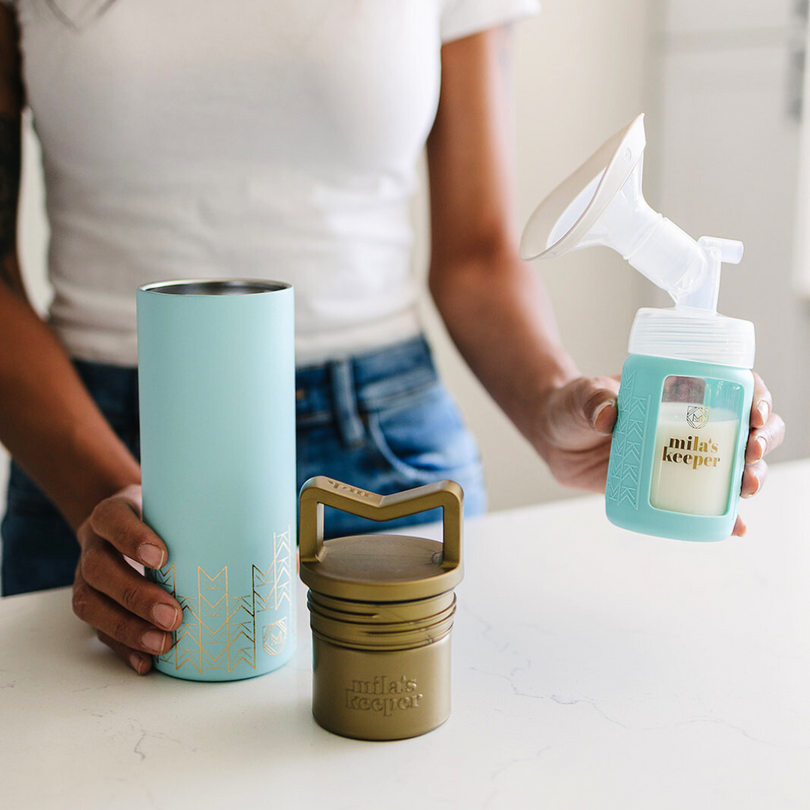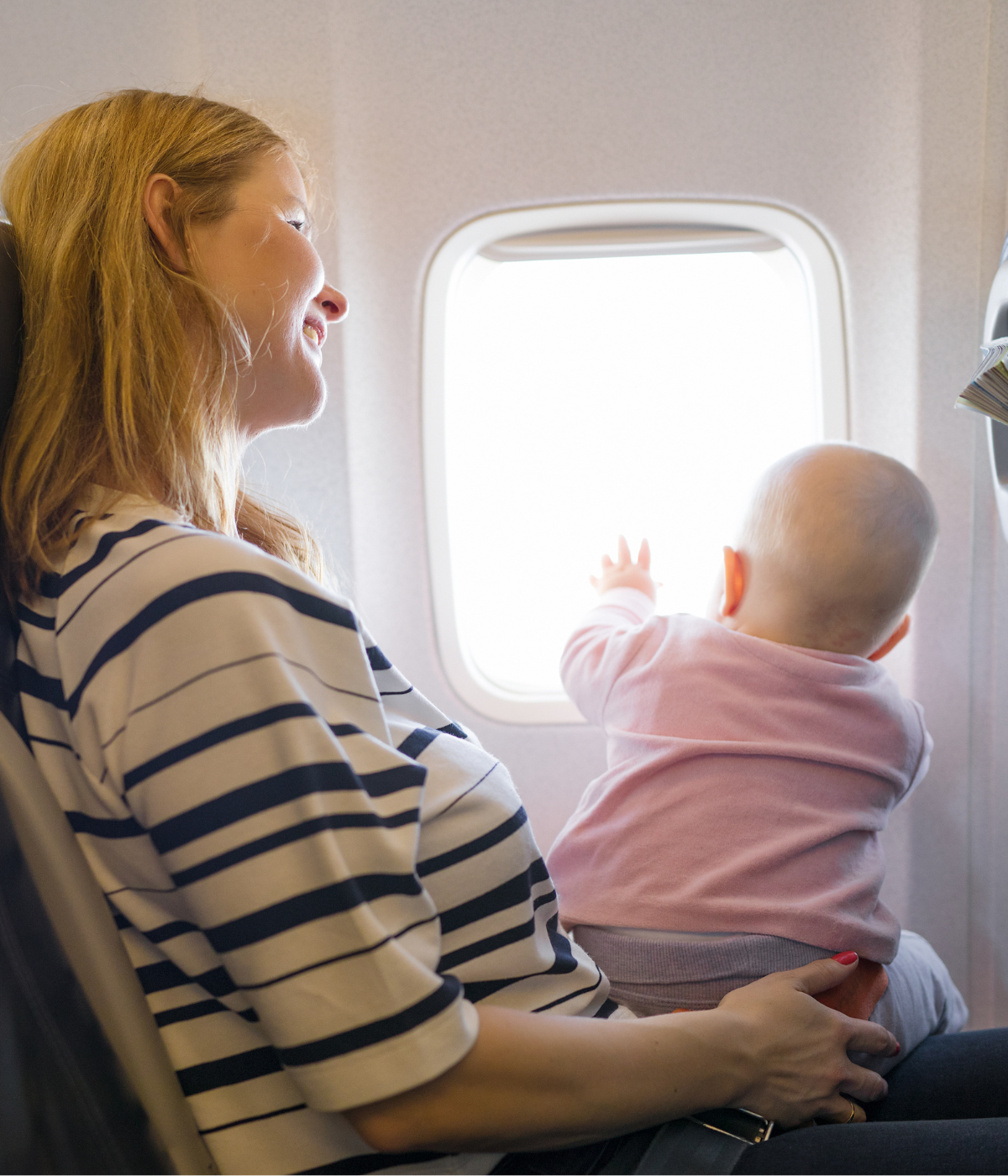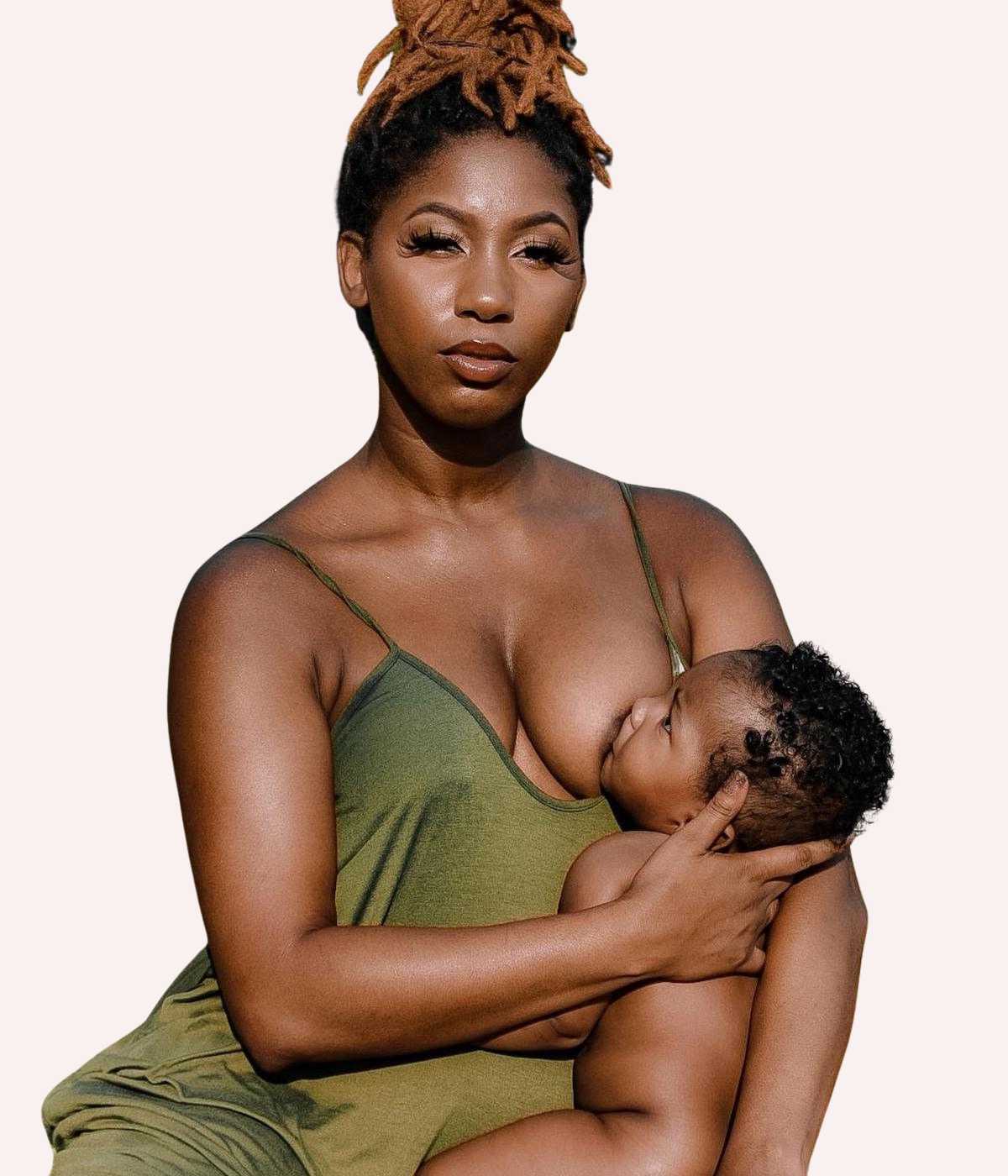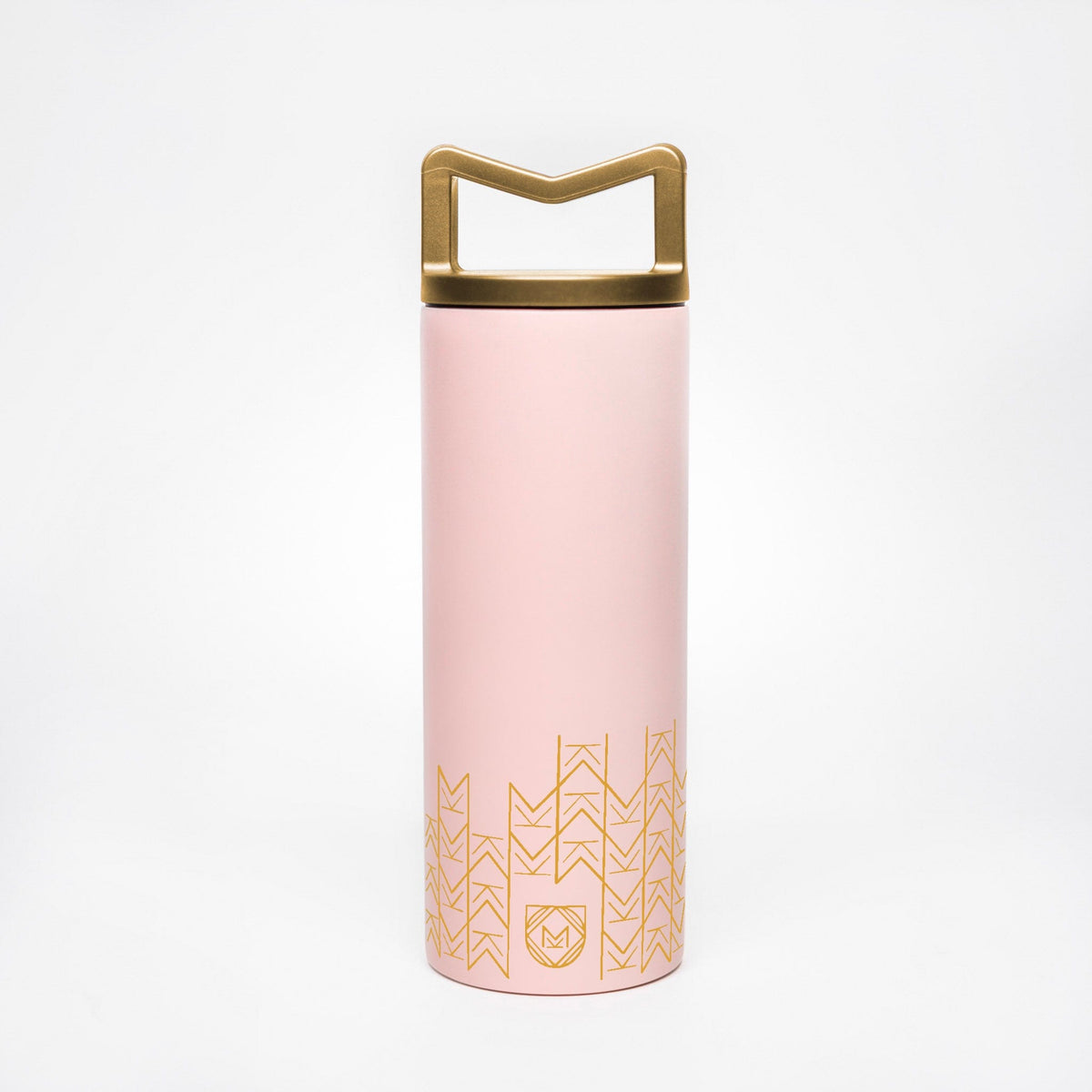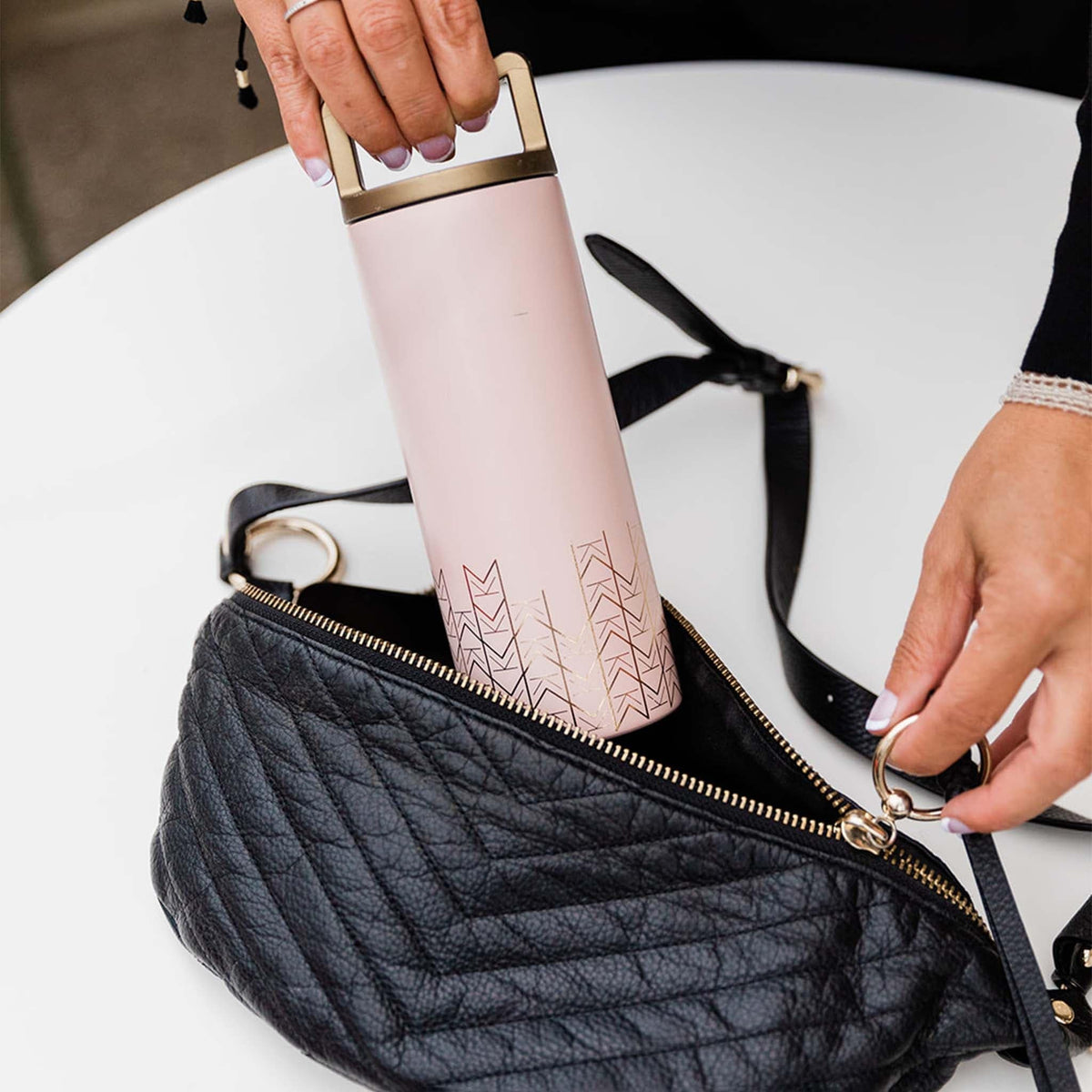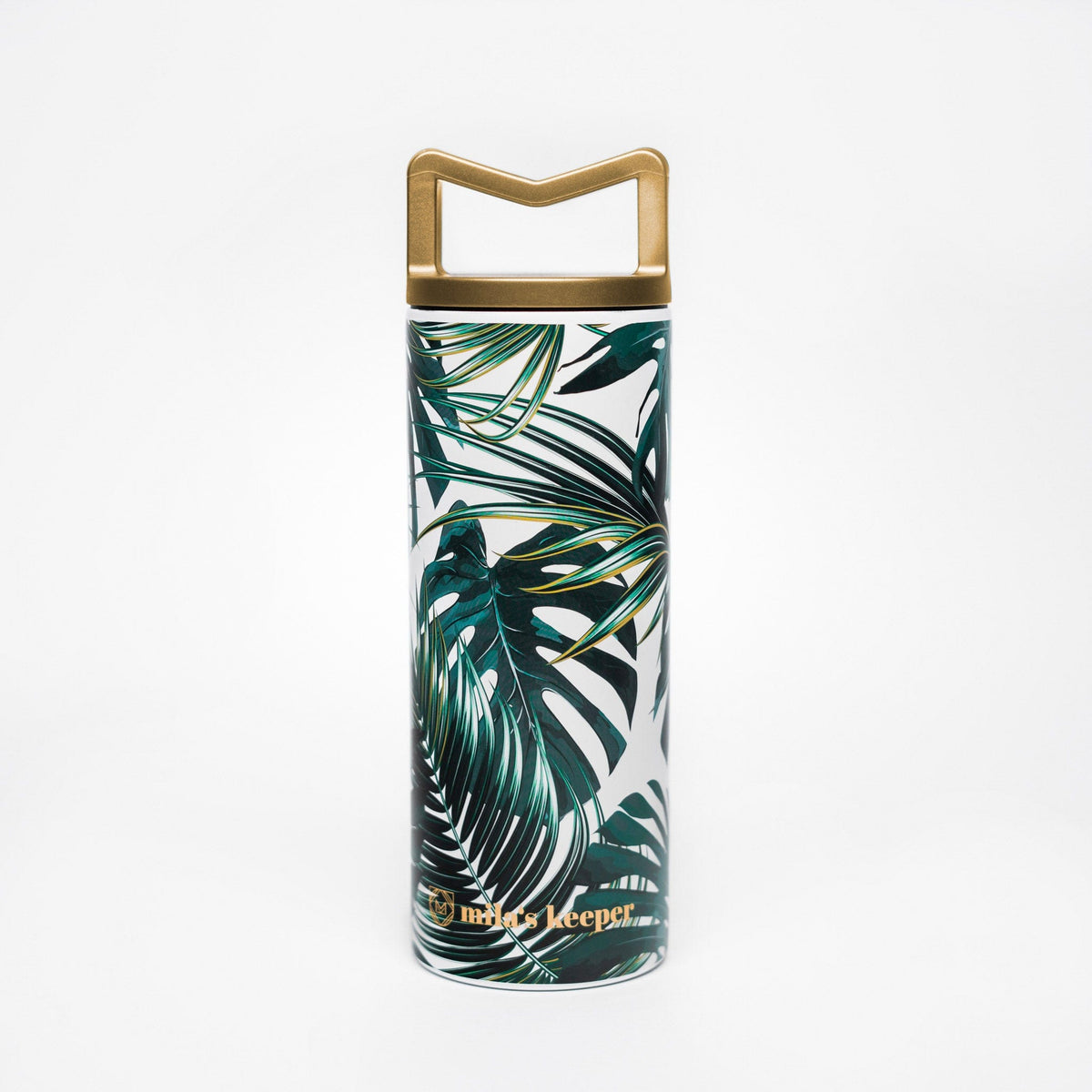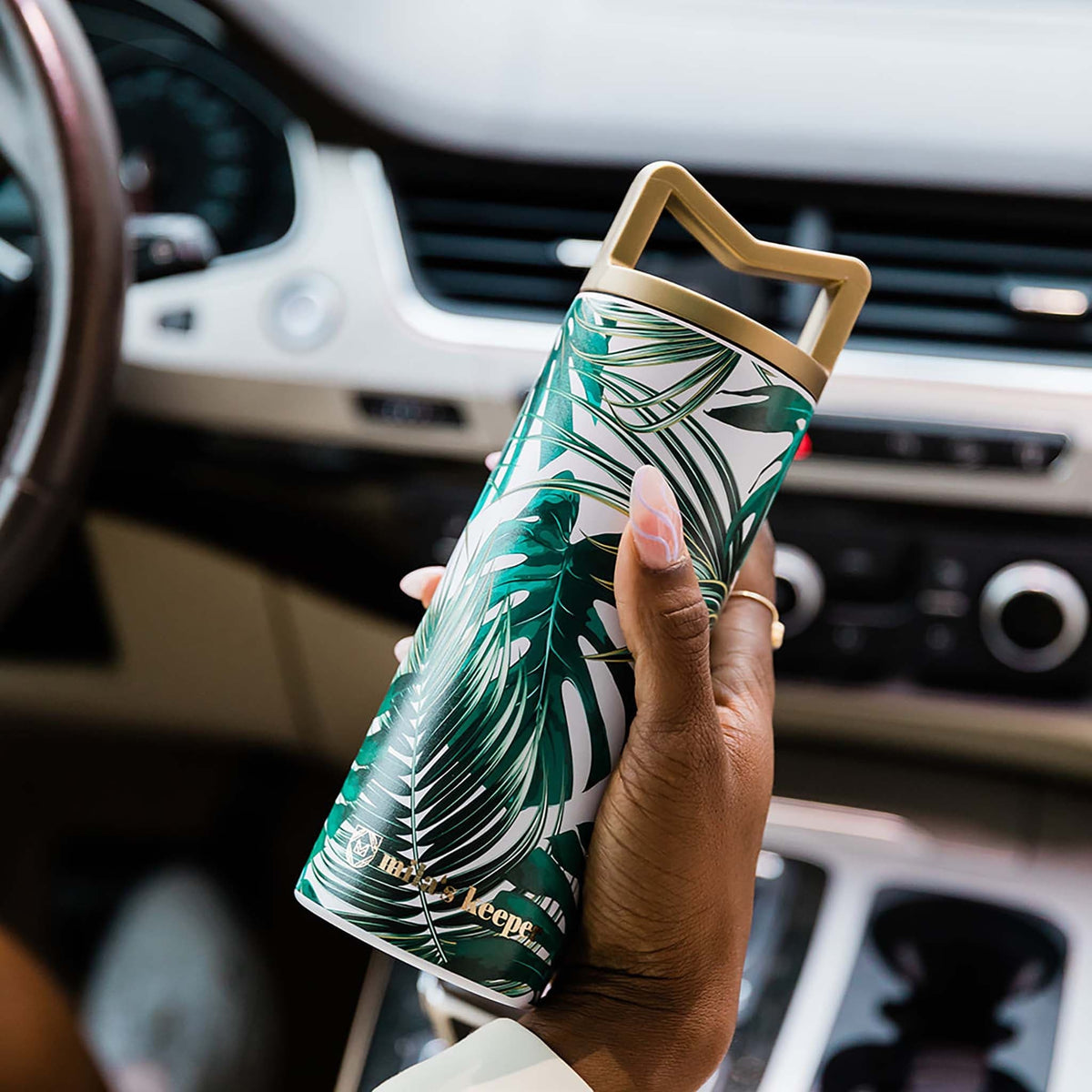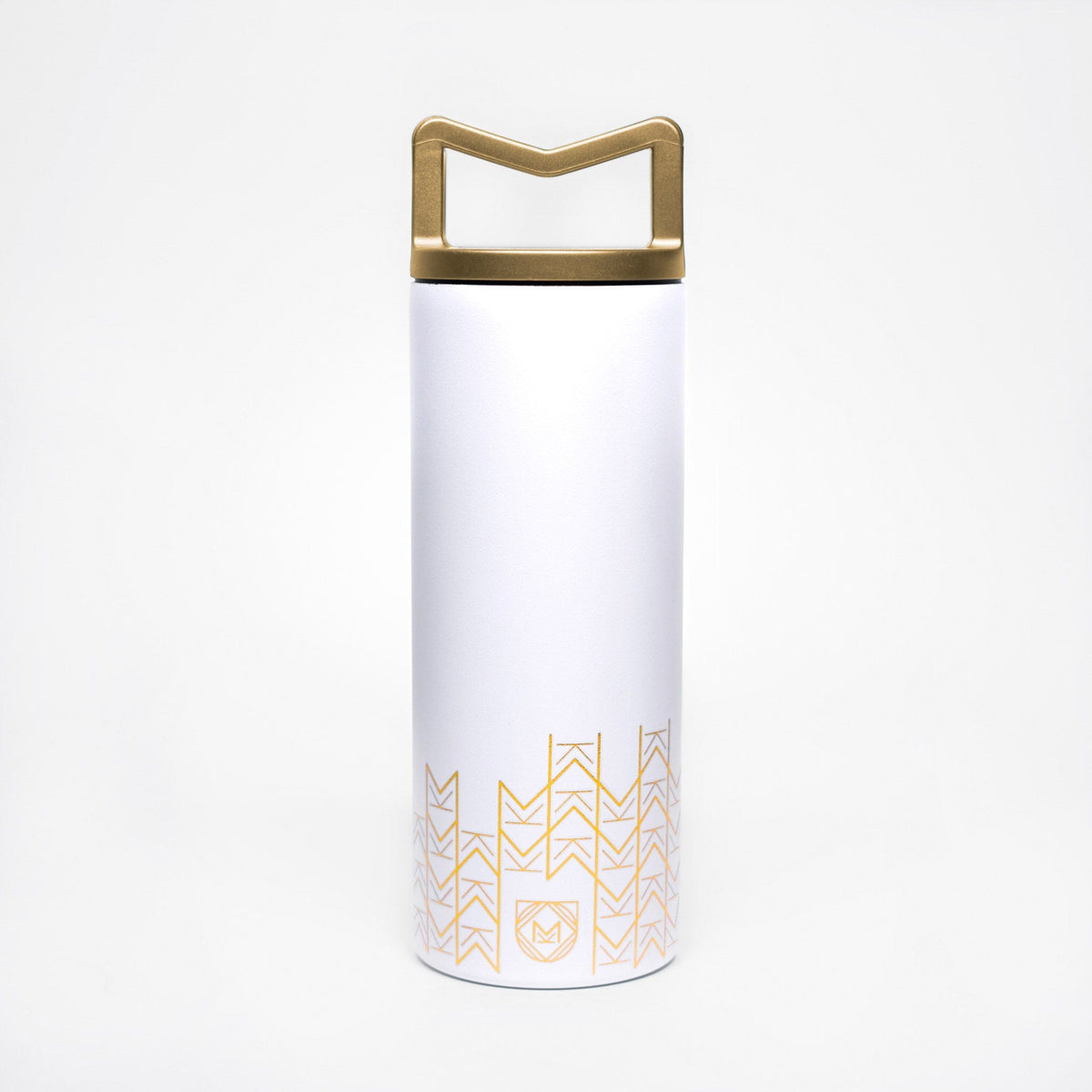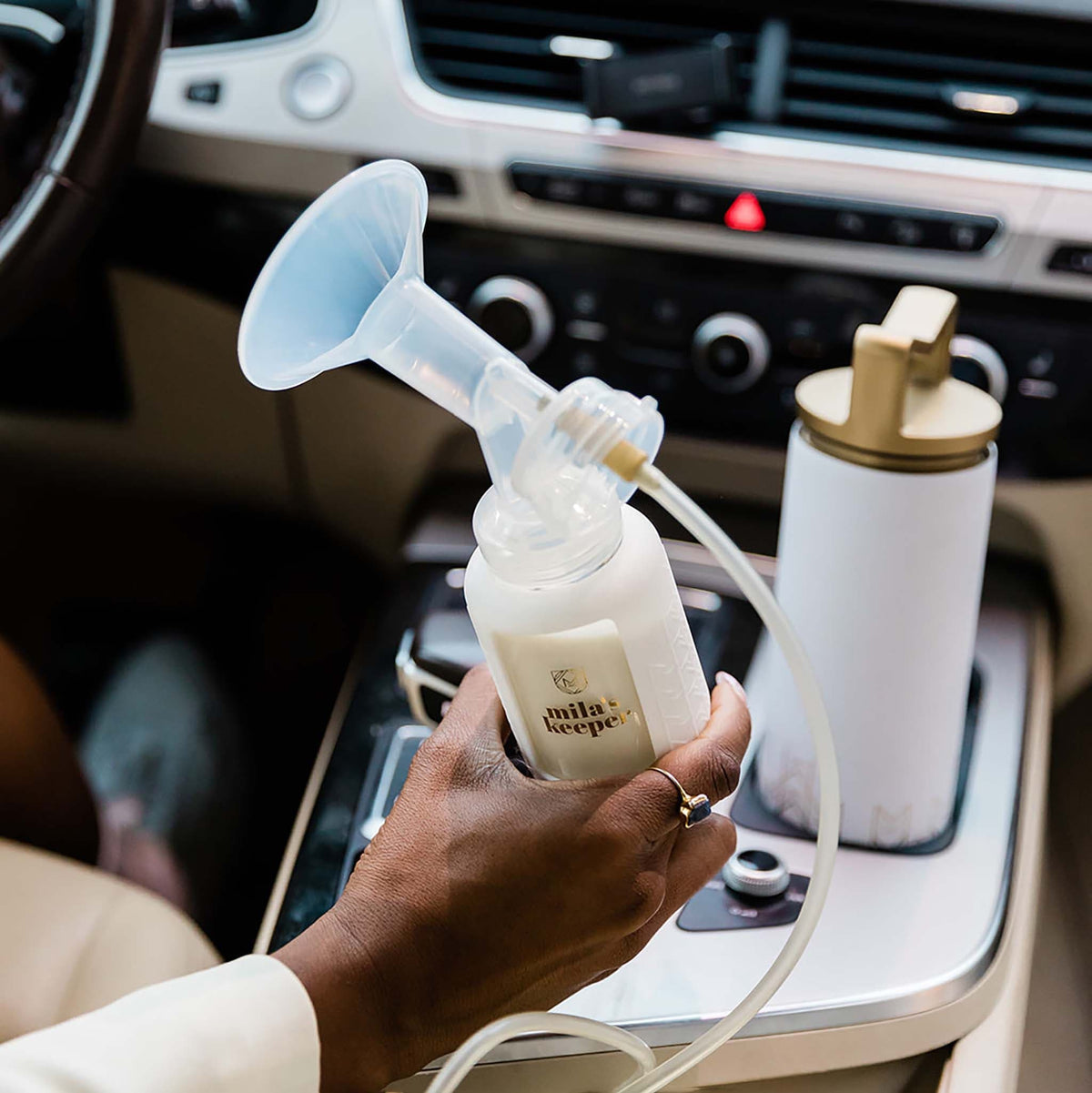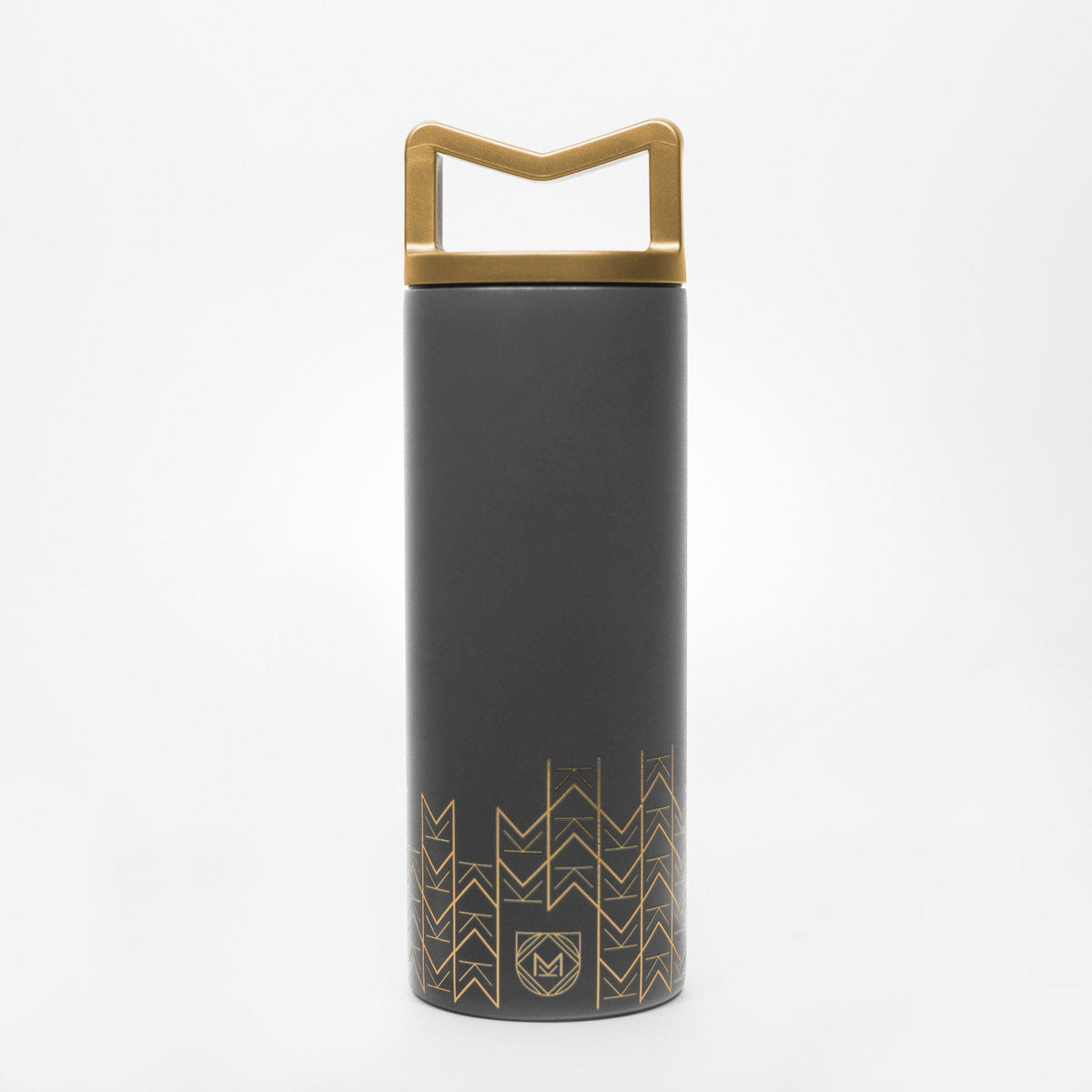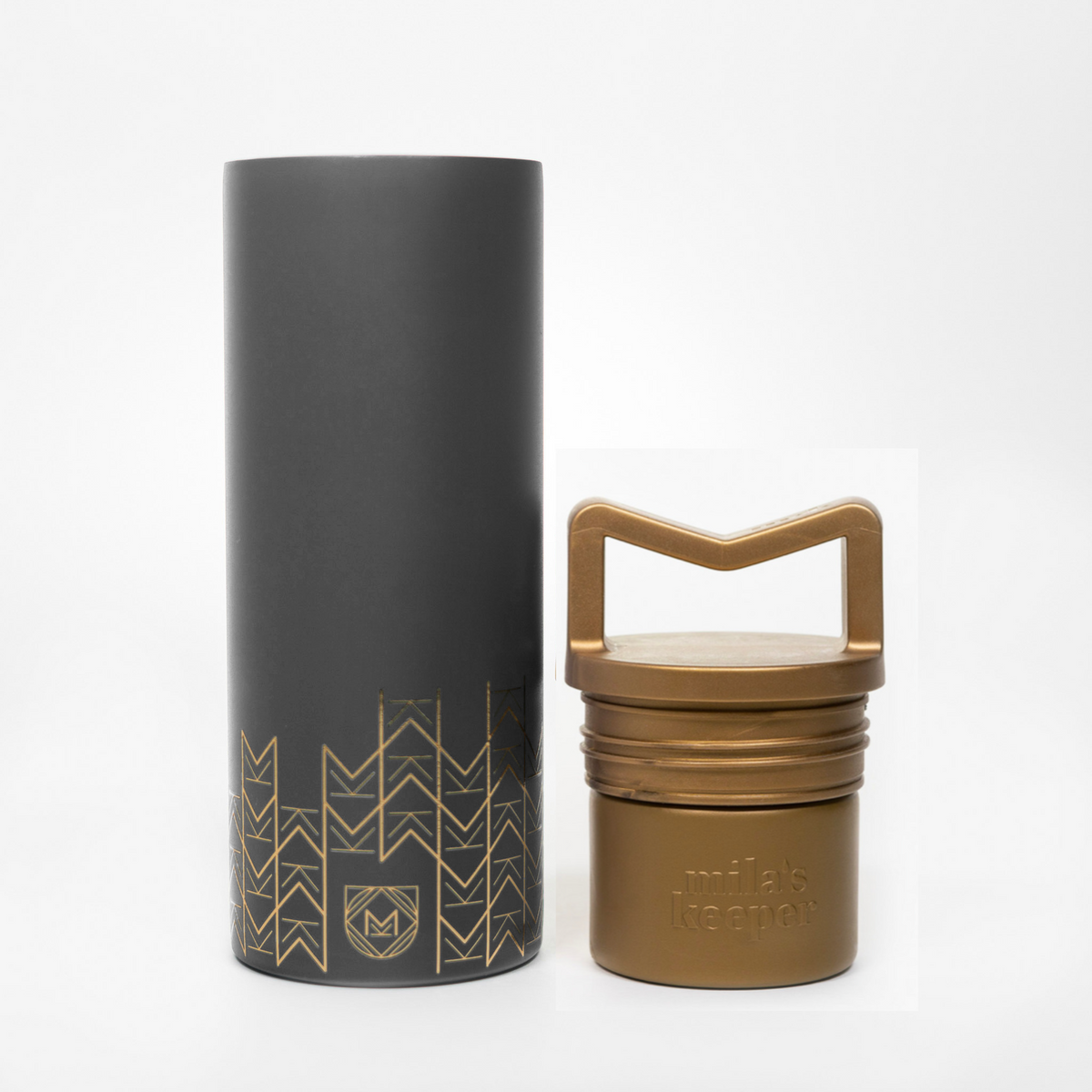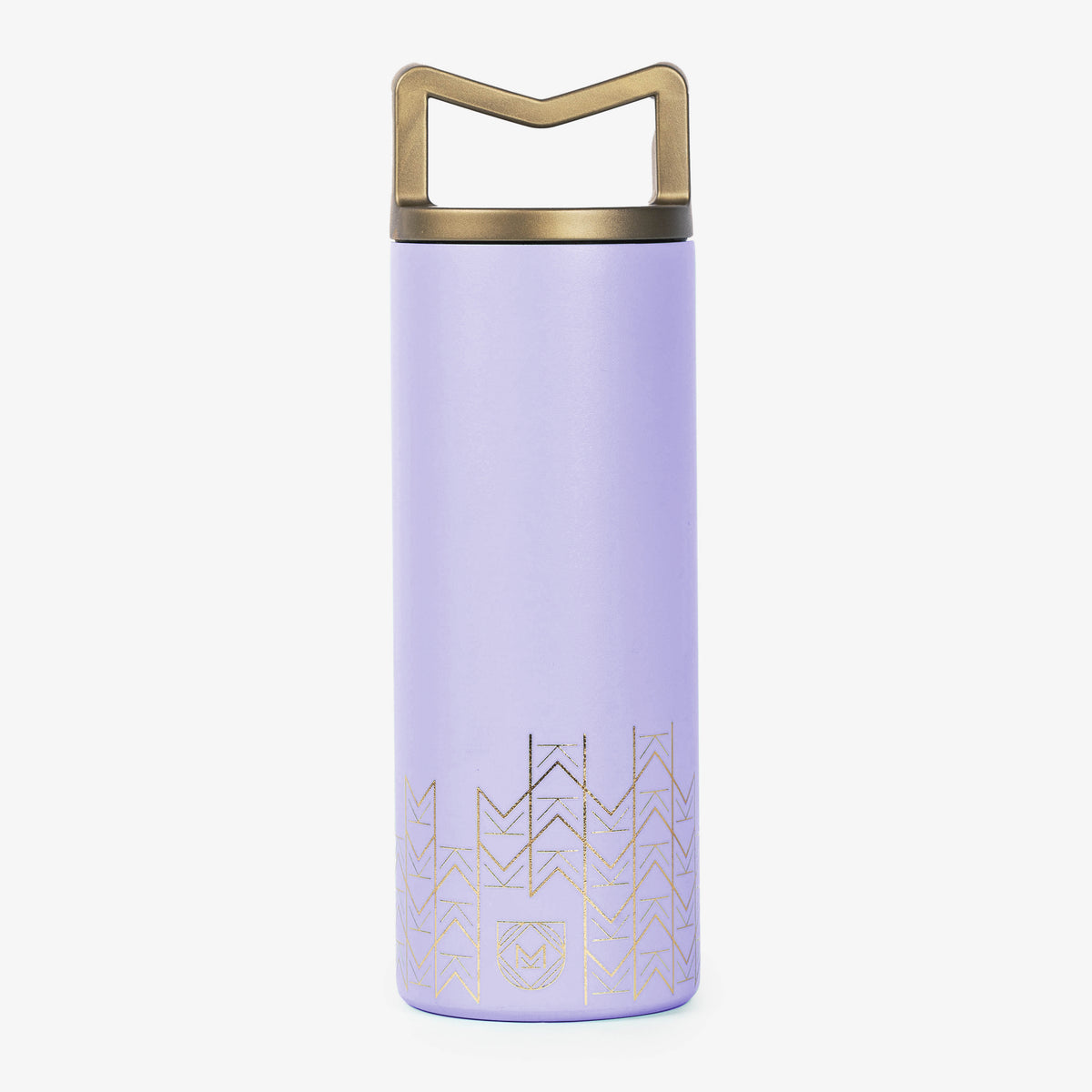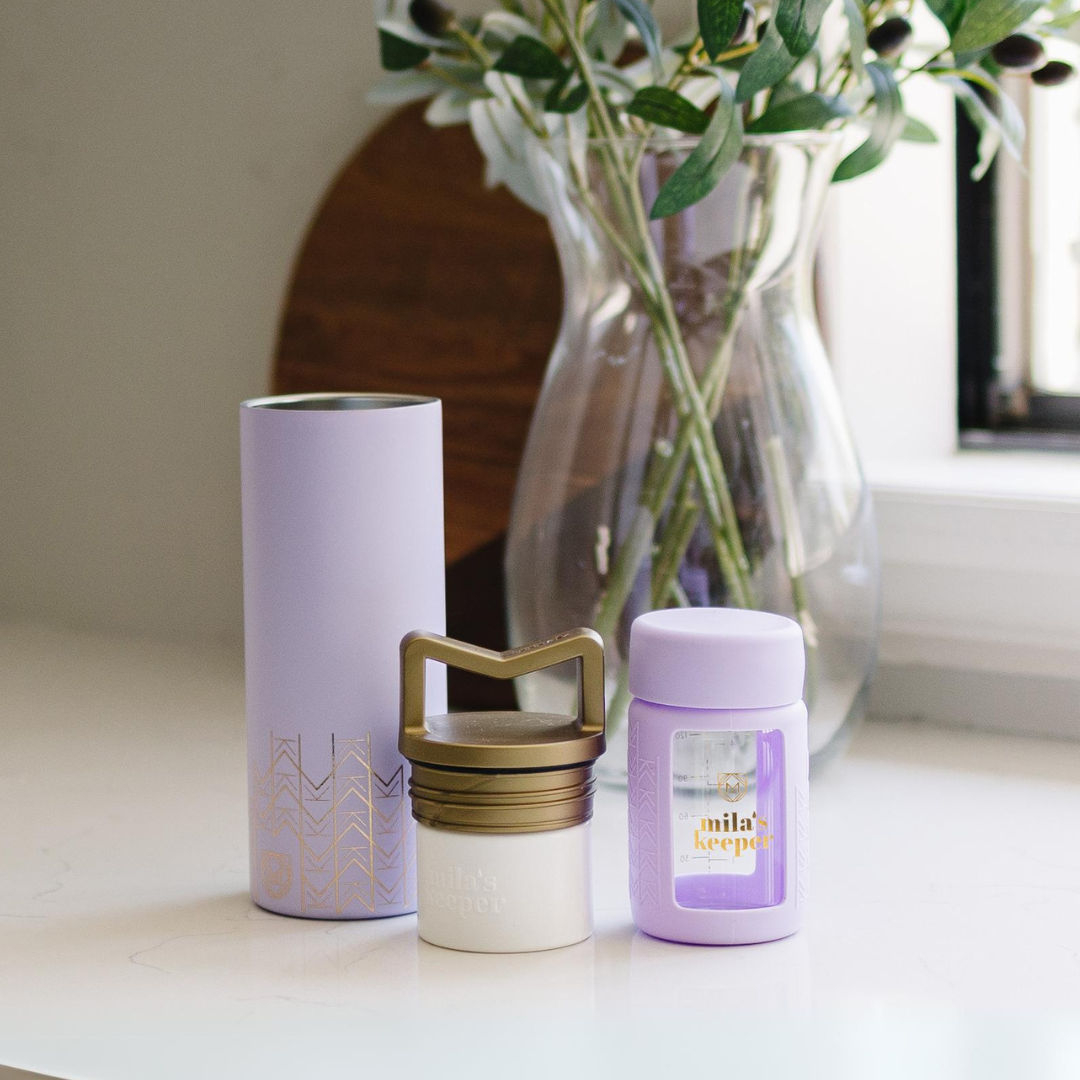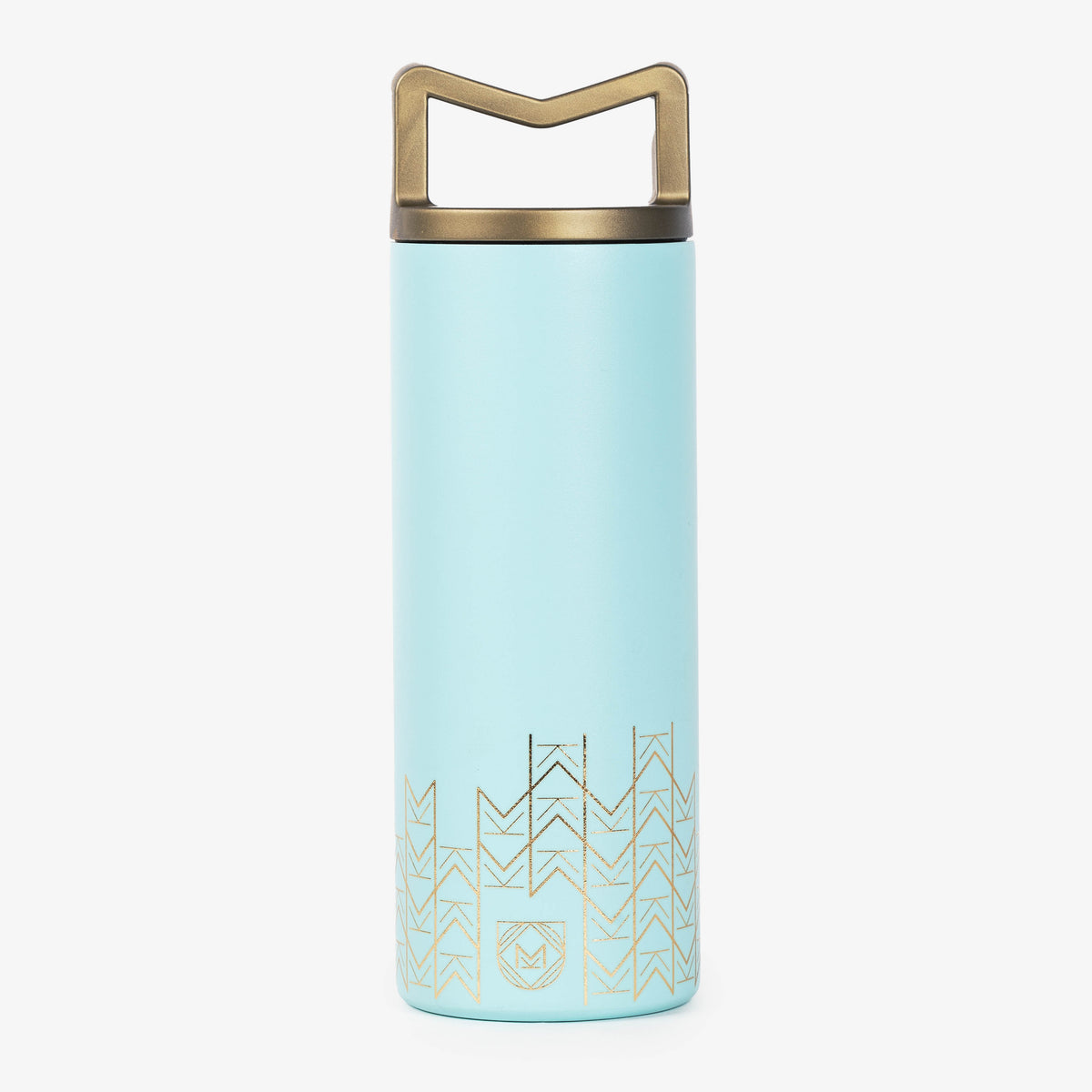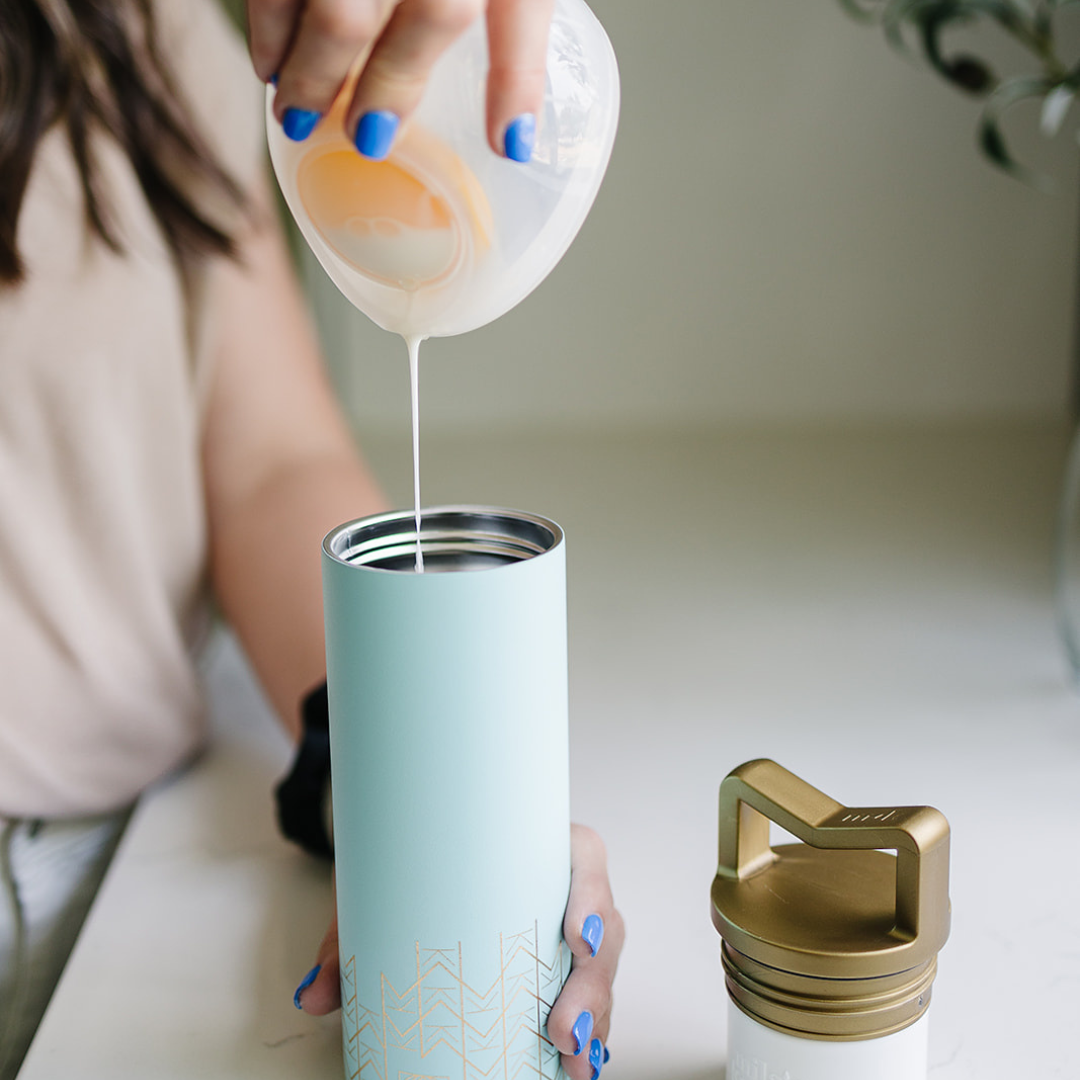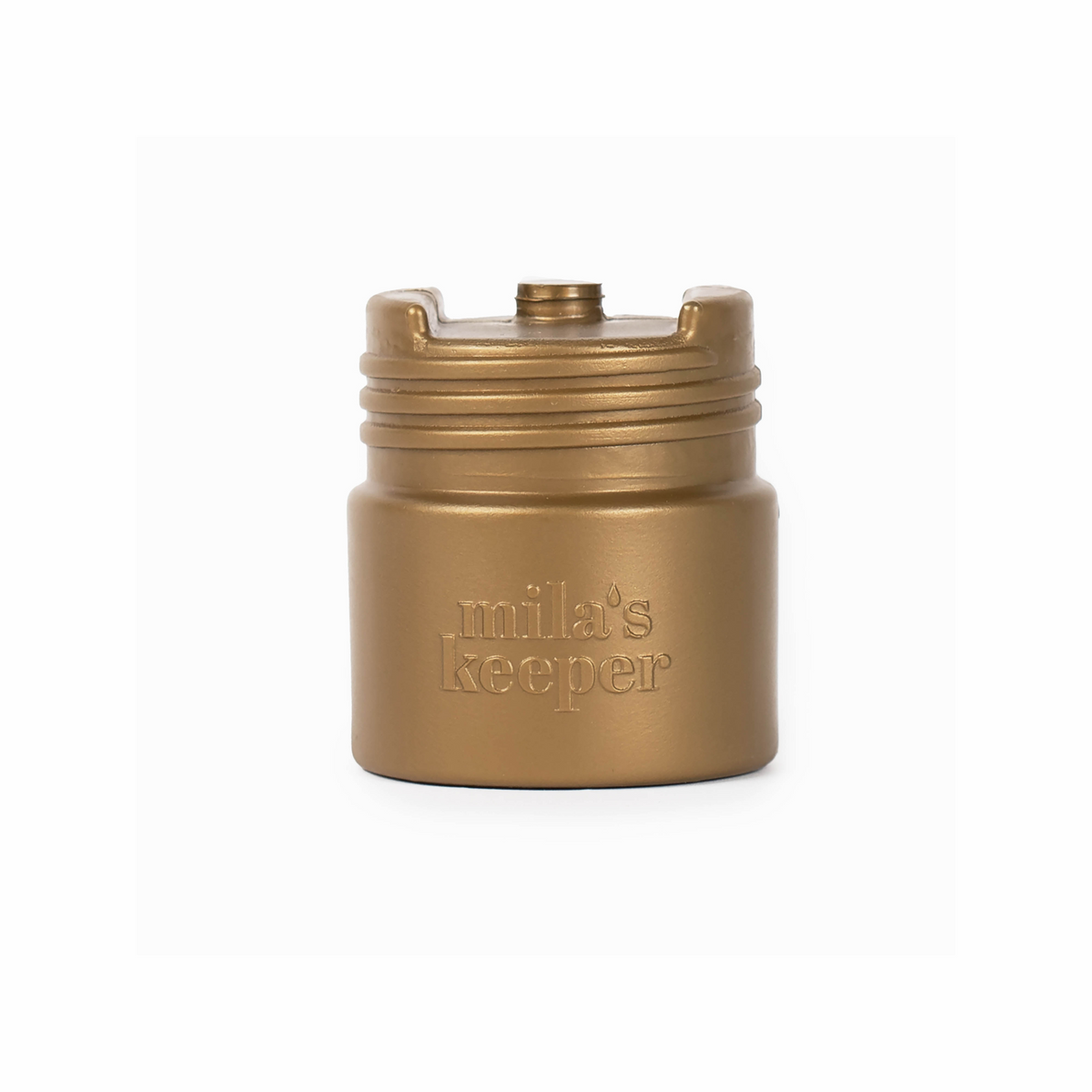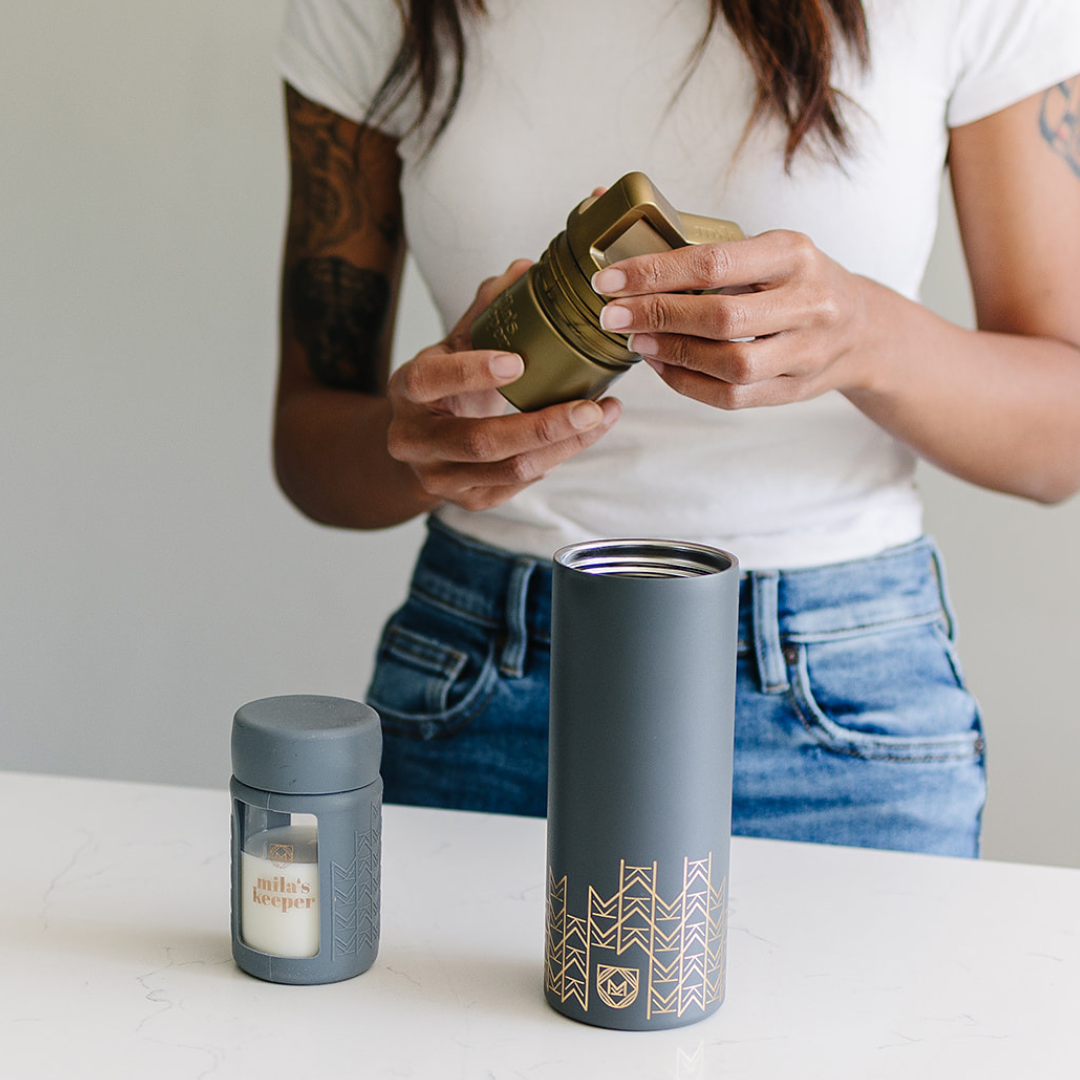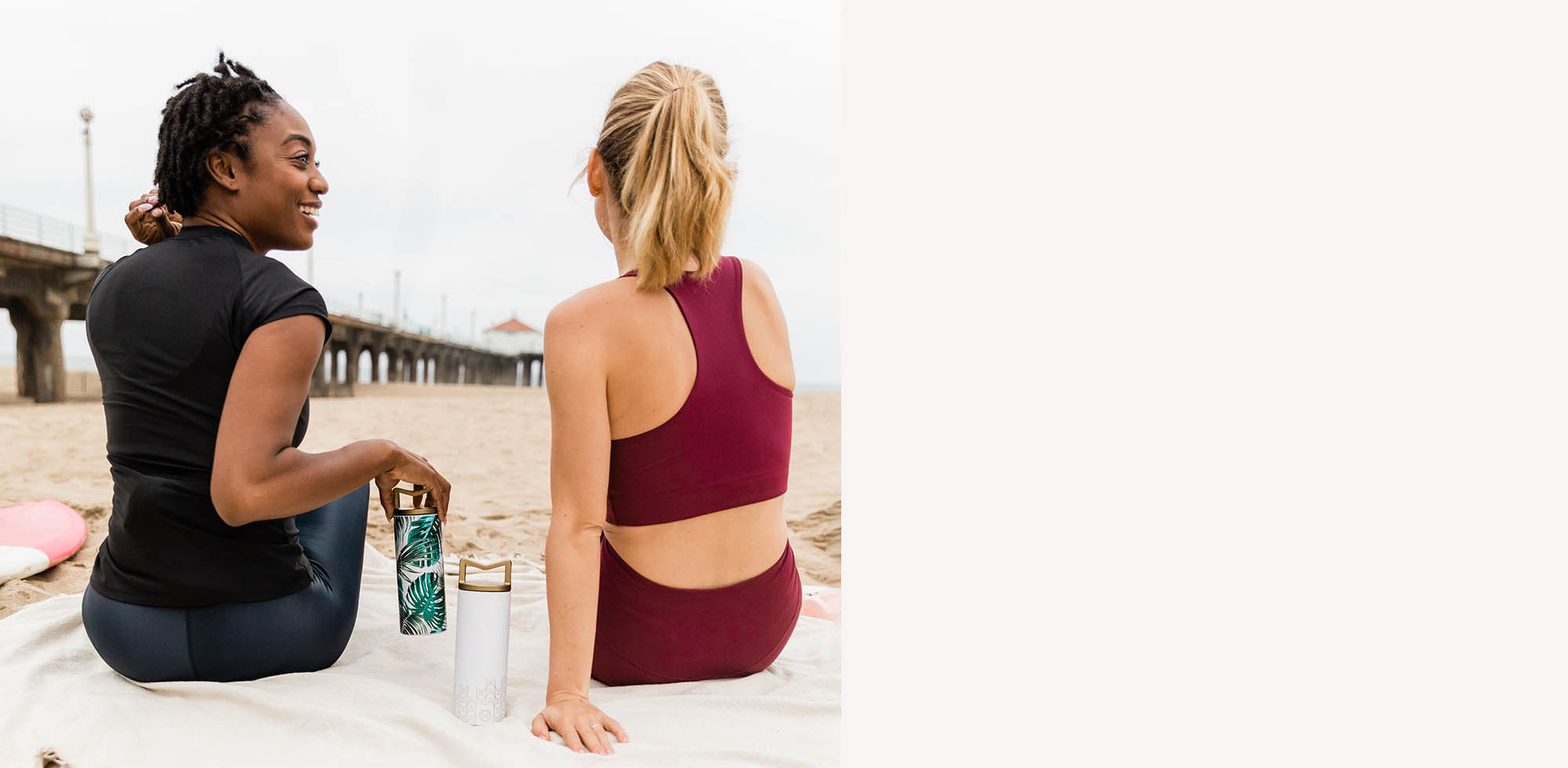New parents have plenty of decisions to make, and one of those choices is whether to use plastic or glass bottles for bottle feeding. We'll share information on plastic, stainless steel, silicone, and glass bottles below that may help you make the call.
See Related: How Breastfeeding And Breast Milk Production Work
1. We may be biased but we'll tell you why
At Mila's Keeper, we advocate for moms and Mother Earth alike.
When developing our portable insulated coolers and breast milk storage bottles, we worked with experts and other ecologically-minded individuals to determine the best course of action.
We believe breast milk is liquid gold as far as nourishing our little ones, and wanted to protect it with materials of the highest quality.
Our bottles - used for collecting, storing, and feeding - are made with BPA-free, borosilicate glass. Unlike other glass bottles, borosilicate glass is the highest medical-grade glass and can withstand temperatures that milk bottle usage demands, from the freezer to the bottle warmer.
This type of glass is highly durable. It's more heat resistant in part due to its higher manufacturing temperatures. It will not break like regular glass. Plus, all our glass bottles come with an added layer of protection.
The lid and cover for our bottles are made of 100% silicone, which means they are completely plastic-free. Silicone is more durable than plastic. It's non-toxic and easy to clean (yes, that means dishwasher safe).
Another bonus we like to not-so-humble brag about is the fact that these glass containers can be repurposed.
You can use these glass bottles for storing pureed baby foods or your favorite jams. When your "baby" heads off to kindergarten you could even use it to show them how a seed sprouts and grows, kind of like how they did.
While plastic degrades with time, yellowing and potentially becoming toxic, these glass bottles will last a lifetime.
These are just a few reasons why we go gaga for a glass baby bottle.

2. Why you'll probably need bottles even if you're breastfeeding
If you're exclusively breastfeeding your child, you're still likely to need some baby bottles.
Even if you envision never leaving your little one's side for six months or more, there may be some situations where you need to be away for a bit. Also, you may want to pump so your partner, mom, grandpa (or whoever else wants to help) can have an opportunity to feed the baby.
Chances are you've already thought about which bottles to buy, or maybe you've already purchased some. You may have hand-me-down plastic bottles or glass bottles from friends who shared all their baby stuff as soon as they heard you had a baby on the way.
However, you're not obliged to continue using what has been passed down to you, especially plastic baby bottles. We'll get more into why that is later, but suffice it to say for now that you can choose what you want to use when it comes to you and your baby.
3. What are all the options available?
There are several different types of baby bottles: solid plastic, plastic bottles with disposable liners, plastic with glass liners, just glass, glass with silicone sleeves, silicone bottles, and stainless steel bottles.
Each of these has some benefits and potential problems.
We'll take a look at cost, convenience, environmental impact, and other factors that may impact your decision-making process.
Concerns about your baby's health will likely top this list, so we'll be sure to include information on that as well.
So let's start with one of the most common options when it comes to baby bottles: plastic. And though there are many downsides we'll start with what makes plastic so tempting.
4. Plastic comes at a lower price and greater convenience
There's a reason why people choose plastic. Whether it be a water bottle, grocery bag, or storage container, reaching for a disposable option is generally a cheap and easy choice.
Replacing lost plastic items isn't cost prohibitive, so we don't have to worry about taking great care of these things. Reaching for plastic bottles - whether for your baby or yourself - is something that has just become standard practice for many people.

Another upside is that you can generally find a plastic baby bottle just about anywhere. Accessibility and affordability are important factors for most folks.
Plastics are also pretty durable. When we think of glass, we may worry about accidents.
A glass container could leave you with a dangerous mess of shattered glass. With a plastic bottle, you don't have to wonder whether it will slip from your hands in the middle of the night as you stumble half-asleep across the kitchen.
The last thing anyone wants to deal with in that zombie-like sleep-deprived state while still trying to care for a baby is a hazardous clean-up site.
It's understandable why many parents choose plastic bottles. They're ubiquitous, easy, and generally come at a lower cost.
However, when we talk about the lower price of plastics, we're referring to the initial investment of the buyer. What we don't always think about is the long-term cost to the environment and potentially our health.
We'll get into some of that now.
5. The downside of plastic: cheap and easy comes at a cost
A lot of us have a love-hate relationship with plastic. We love the convenience and the cost, but we've also seen the movie Wall-E more than once, and we know it's not a very earth-friendly option.
Of the 40 million tons of plastic waste generated last year in the United States, we only recycled five to six percent of it.
The remainder was incinerated or ended up in landfills.
You've probably heard the phrase, "reduce, reuse, recycle." It turns out we have overestimated our will or ability to achieve that third one. While some plastic items have been repurposed or recycled, most are not.
In other words, we're really not recycling as much as we'd like to think.
A few years back, the United States relied heavily on China, and the vast majority of our plastic recycling was outsourced. However, with changing agreements and regulations, this outsourcing has virtually ceased, and we're stuck with an enormous amount of plastic and a huge problem.
Plastic recycling relies heavily on water and other resources (not the least of which is funding and political will).
The current rate at which we produce and consume plastic products is not sustainable.
We may want to ditch plastic, but unless we dedicate a lot of time and energy to the effort, it's hard to cut out plastic completely. That said, it's important to reduce our consumption where we can.
If you need a little inspiration, you can always watch Wall-E one more time. Or, when you want to take action, watch the video at the end of this post, and try a few of the relatively easy ideas.
Bonus: Breastfeeding In Asian And Asian American Communities
6. Plastic bottles may not be the best for your baby's health
Though pliable polymers were invented in the 19th century, it wasn't until the 20th century that fully synthetic plastic came onto the scene. It was still decades later when we began the mass production and consumption of plastic.
Just like disposable diapers and wipes, plastic baby bottles were a popular choice for their convenience and reliability.
In the 1950s it became common for a chemical called bisphenol A (BPA) to be added to some plastic products to strengthen them, increase longevity, and keep out bacteria. This was done without extensive research to ensure its safety.
Unfortunately, concerns began to arise when some studies associated BPA with disruptions in brain development. This is because the chemical impacts the endocrine system, and may lead to the aforementioned problem as well as reproductive development.
While most studies surrounding this chemical have taken place on non-human animals, we are certain about all of its effects on humans. However, since BPA can mimic estrogen, it could increase body fat, affect the timing of puberty, and disrupt nervous and immune systems.
The good news is that companies in the U.S. are no longer manufacturing infant formula packaging, baby bottles, and sippy cups that contain BPA because of a government ban. The bad news is that some of those bottles are still in circulation, being handed down with the best of intentions.
For those using older plastic bottles, you may want to check the bottom for the recycling symbol. If there is a #7 or PC (meaning polycarbonate plastic), then the bottle probably contains BPA. Bottles that have the #1, #2, or #4 symbol are made of polyethylene, and #5 bottles are made of polypropylene.
On one hand, it's great that advocacy efforts led to stricter FDA regulations. However, it seems that when we remove one group of harmful chemicals, they're replaced by a new set of chemicals that haven't gone through rigorous testing.
While it's simple to find a BPA-free plastic bottle, the chemicals that have come in to replace BPAs - like bisphenol S (BPS) and bisphenol F (BSF) - may also pose potential health risks.
One of the concerns about BPA-free plastic bottles is that they can leach chemicals into the liquid contents, which could negatively impact a person's health.
This possibility may be even more likely if a bottle is exposed to extreme temperatures.
When we're talking about babies, who may be particularly vulnerable, it may be best to seek out alternatives. Using glass, stainless steel, or silicone baby bottles may be a better alternative for parents concerned about potential risks.

7. Stainless steel and silicone are a bit better
If you want to take some steps to limit risk as far as toxins from plastic, a stainless steel bottle or silicone baby bottle is a better choice. Of course, silicone and stainless steel baby bottles tend to be on the expensive side.
Some people complain that a baby bottle made entirely of silicone doesn't stand up as well as a glass baby bottle, and isn't as durable as a glass bottle. Others have noted that there's a tinny aftertaste when using stainless steel.
Still, with stainless steel, silicone, or glass baby bottles (as opposed to plastic bottles), you won't have to worry about chemicals leaching into the baby's formula or the breast milk your baby drinks.
8. Glass baby bottles are the most environmentally friendly and the best option for baby's milk
Some people might not recommend glass baby bottles because they think they break easily, and don't want to deal with the mess or risks of shattering glass. However, if you use glass baby bottles like the ones at Mila's Keeper, you know you're dealing with a sturdier glass bottle than most.
On top of that, our glass baby bottles have a protective silicone sleeve with an opening on the side that makes it easy to see the contents inside. Mila's Keeper 5 oz. bottles are compatible with the leading breast pumps and nipples.
Glass bottles don't change shape or color or get scratches that can be a hiding space for bacteria.
When it comes to cleaning Mila's Keeper breast milk storage bottles, you can use a simple bottle brush and soapy water, or place them in the dishwasher since they're dishwasher safe. As mentioned above, they can withstand higher temperatures than plastic baby bottles.
The plastic ones may be cheaper, but think about the eventual costs. Even though the FDA banned Bisphenol A (BPA), plastics have a wide variety of chemicals that can potentially pose a problem. So if parents are super concerned about their babies, glass is the way to go.

Being mindful of the waste we create is key to improving our relationship with the earth. Like leaving a campsite cleaner than how you found it, thinking about ways to make the load a little lighter for future generations shows kindness and consideration.
Without needing to be overly anxious, we can significantly reduce our reliance on plastic. Let's clean up our mess with a little less stress. As Marry Poppins says (or sings, rather), "You find the fun, and snap! The job's a game!"
In that spirit, here's Kathryn Kellogg, founder of Going Zero Waste, sharing some of her favorite ideas to minimize plastic usage.
Keep Reading: 7 Reasons Why We Celebrate Black Breastfeeding Week
--
A female-designed and female-run company, Mila's Keeper is on a mission to empower women to thrive during their breastfeeding journey by offering reusable, eco-friendly breast milk storage solutions for their day-to-day needs. Get the latest tips and info on Mila's Keeper products by following us on Facebook, Twitter, Instagram, Pinterest, and LinkedIn.

